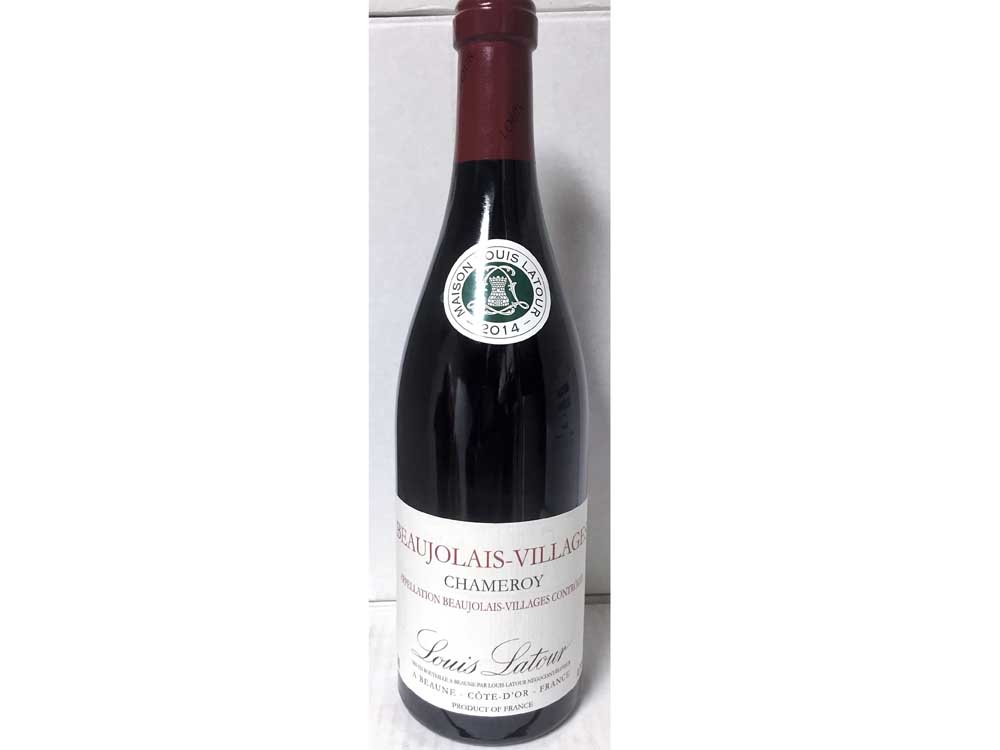Beaujolais’ Gamay grape was once called the poor man’s pinot
Published 12:00 am Thursday, October 6, 2016

- Submitted photoLouis Latour’s Beaujolais-Villages Chameroy ($12) is made with Gamay grapes selected from village vineyards on crystalline granite soils, producing aromas of mocha, violet, cherry and strawberry. It is oak-aged and bottled in Beaune, in the nearby Burgundy region.
Some years ago, when Willamette Valley wine producers began searching for a grape to complement the pinot noir for which Oregon has become world renowned, they cast their eyes and palates upon the Beaujolais region of France.
Gamay is the principal grape of Beaujolais, which is located just north of Lyon, France’s culinary capital, and adjacent to Burgundy in the east-central section of the country. Ninety-eight percent of its acreage is dedicated to these vigorous vines.
A natural cross of pinot noir with the ancient gouais blanc grape, gamay noir à jus blanc, as it is properly known, is a purple-colored grape that has been cultivated as long ago as the 14th century. It is less difficult to cultivate than the elegant but temperamental pinot noir; it ripens about two weeks earlier and in greater abundance. Indeed, medieval records show that gamay was once regarded as the poor man’s pinot.
But planting on alkaline soil helps to soften gamay’s natural acidity, resulting in distinctive wines — light-bodied, like pinot noir, but stronger and fruitier. An anaerobic process called carbonic maceration brings out the floral aromas of lilac and violets, while emphasizing the fruit finish of crushed strawberries and raspberries.
At a recent tasting of gamay wines in Portland, I was fortunate to sit between Anthony Collet, Inter Beaujolais marketing expert from Villefranche, France, and Doug Tunnell, owner and winemaker at Brick House Vineyards in Newberg. They helped me to understand how much I didn’t know about this underrated grape.
Limited acreage
The gamay grape has been in the Willamette Valley since 1988, when it was introduced by Amity Vineyards near Salem. Today, nearly three decades later, there remain only 16 Oregon vineyards that grow gamay. Although Oregon has more than 700 wineries, a mere 30 acres are planted in gamay, Tunnell said, with the single largest planting 4.2 acres.
Tunnell’s Brick House winery is located in the Ribbon Ridge AVA, one of the state’s smaller but most highly regarded viticultural regions. “Our marine sediments share much with the hills of Beaujolais,” he said, including minerality and soil acidity level.
Brick House released its first gamay noir in 1995, Tunnell said, and it continues to be a steady seller. Like other Oregon gamays, it is aged in French oak and produced in the “Cru Beaujolais” style.
Collet described gamay as a “very versatile grape” that “matches almost any kind of food, from tacos to fusion.” Contrary to Oregon’s meager allotment of acreage to this grape, Beaujolais has 42,000 acres planted in gamay. (“But that’s still only 0.4 percent of all vineyards worldwide,” Collet said.)
There are 12 appellation areas, the largest of which are Beaujolais and Beaujolais-Villages. One-third of the region’s production is in Villages wines, easy-drinking vintages that are widely available at better wine shops in the Northwest. Louis Jadot and Louis Latour are two of the better-known, and both sell at retail outlets for under $15.
The 10 other vineyard areas have hillside locations between 650 and 1,650 feet elevation, with east and southeast exposures that give them a remarkably similar perspective to the lower Coast Range vineyards facing the Willamette Valley. Sour cherry, dried berry and black pepper are typical flavor characteristics of these “Beaujolais Cru” varietals — descriptions that also have been applied to gamays from Oregon’s Brick House, Amity and WillaKenzie wineries when left to age.
Gamay tasting
At my tasting, held during the annual Feast Portland culinary event last month, I joined 18 sommeliers, winemakers and journalists in sampling four Oregon and four French gamays.
I tasted four Oregon gamay noirs. Brick House’s 2015 varietal, now in bottling, coupled floral and smoky notes with a licorice and pepper finish. It was in sharp contrast to Seven Springs’ 2015 Gamay from Eola-Amity Hills; lighter and fruitier with strong strawberry flavors, it would be a nice summer sipping wine.
I found the 2013 gamay from Methven Family Vineyards (Eola-Amity Hills) to have nice balance with a distinctive stone-fruit finish. The 2014 gamay from Belle Pente Vineyard (Yamhill-Carlton) to be a complex wine, at once spicy and pungent.
Among the French wines, two old-vines choices (a 2011 Juliénas and a 2014 Morgon) were typically Burgundian in their tannic astringency — not sipping wines, but excellent with fatty meats such as the sausage we had to snack on. A 2014 Chiroubles was also high in tannins, but these were balanced with a silky minerality. A rich 2015 Fleurie featured cherry at the front of the palate with a dry finish, making it my favorite of the Old World selections.
— John Gottberg Anderson can be reached at janderson@bendbulletin.com.






